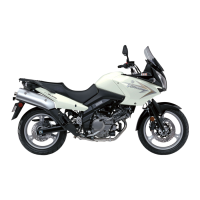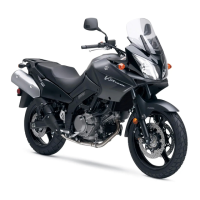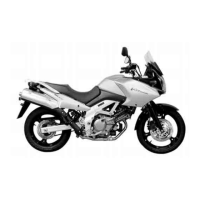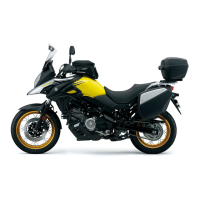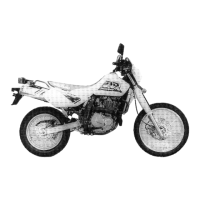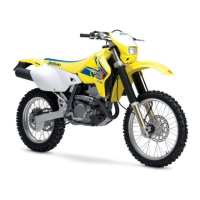5-2 COOLING AND LUBRICATION SYSTEM
ENGINE COOLANT
At the time of manufacture, the cooling system is filled with a
50:50 mixture of distilled water and ethylene glycol anti-freeze.
This 50:50 mixture will provide the optimum corrosion protection
and excellent heat protection, and will protect the cooling system
from freezing at temperatures above –31°C (–24°F).
If the motorcycle is to be exposed to temperatures below –31°C
(–24°F), this mixing ratio should be incleased up to 55% or 60%
according to the figure.
!
50% Engine coolant including reserve tank capacity
"
* Use a high quality ethylene glycol base anti-freeze,
mixed with distilled water. Do not mix an alcohol
base anti-freeze and different brands of anti-freeze.
* Do not rut in more than 60% anti-freeze or less than
50%. (Refer to Right figure.)
* Do not use a radiator anti-leak additive.
Anti-freeze 1 100 ml (2.3/1.9 US/lmp.pt)
Water 1 100 ml (2.3/1.9 US/lmp.pt)
Anti-freeze
density
Freezing point
50%
55%
60%
–31˚C (–24˚F)
–40˚C (–40˚F)
–55˚C (–67˚F)
20 40 60 80 100
Density (%)
0
–10
–20
–30
–40
–50
–60
–70
32
14
–4
–22
–40
–58
–76
–94
Freezing point
Fig.1 Engine coolant density-freezing
point curve.
(˚C)
(˚F)
0 10 20 30 40 50 60
Density (%)
150
140
130
120
110
100
Biling point
(˚C)
(˚F)
302
284
266
248
230
212
Engine coolant density-boiling
point curve.
Fig.2
(kgf/cm²)
1.5
0.9
0.5
0
Gauge pressure
* You can be injured by scalding fluid or steam if you open the radiator cap when the engine is
hot. After the engine cools, wrap a thick cloth around cap and carefully remove the cap by
turning it a quarter turn to allow pressure to escape and then turn the cap all the way off.
* The engine must be cool before servicing the cooling system.
* Coolant is farmful;
• If the comes in contact with skin or eyes, flush with water.
• If swallowed accidentally, induce vomiting and call physecian immediately.
• Keep it away from chiledren.
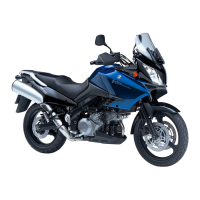
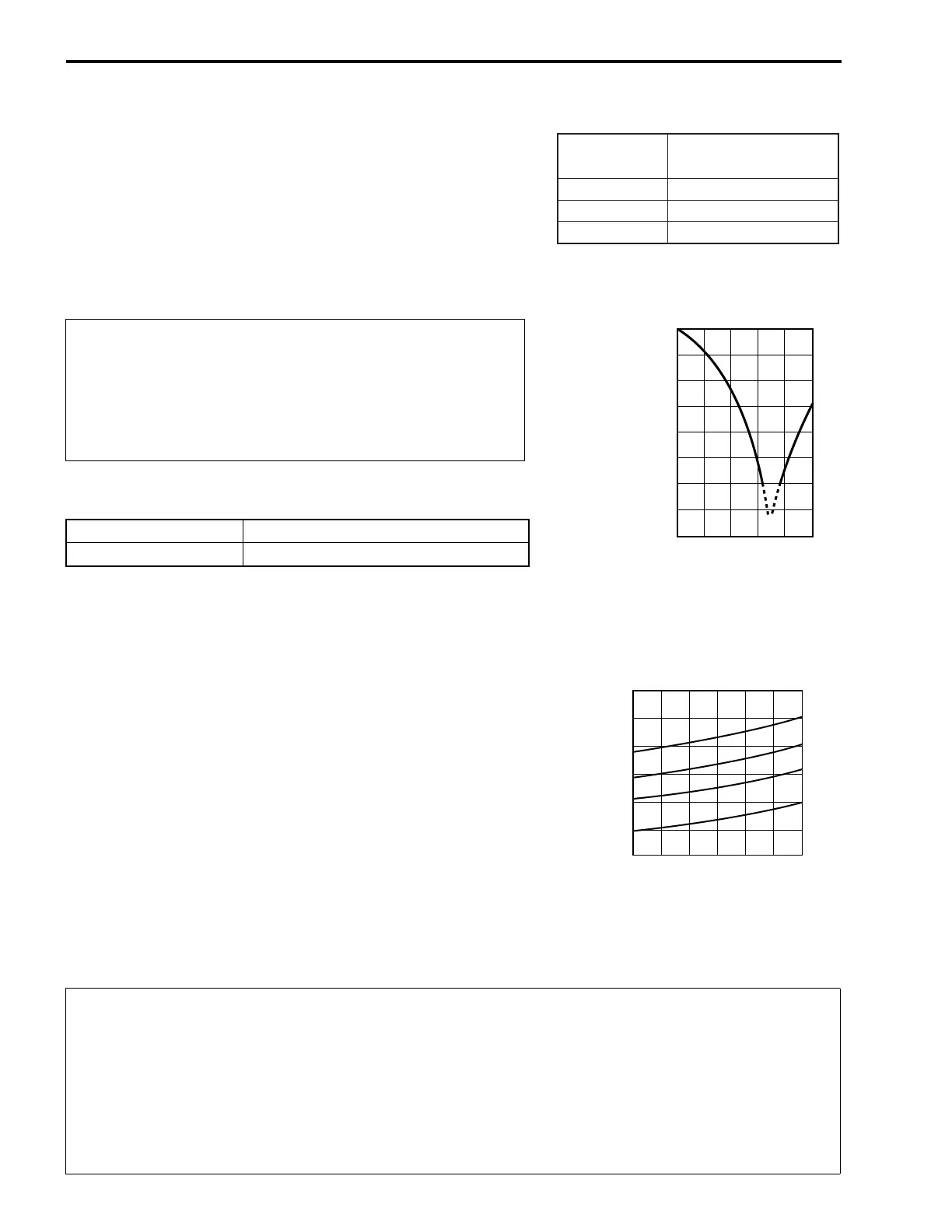